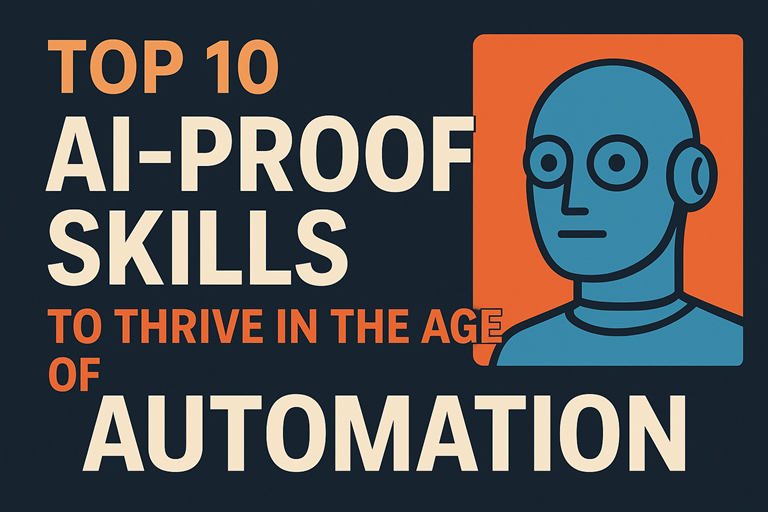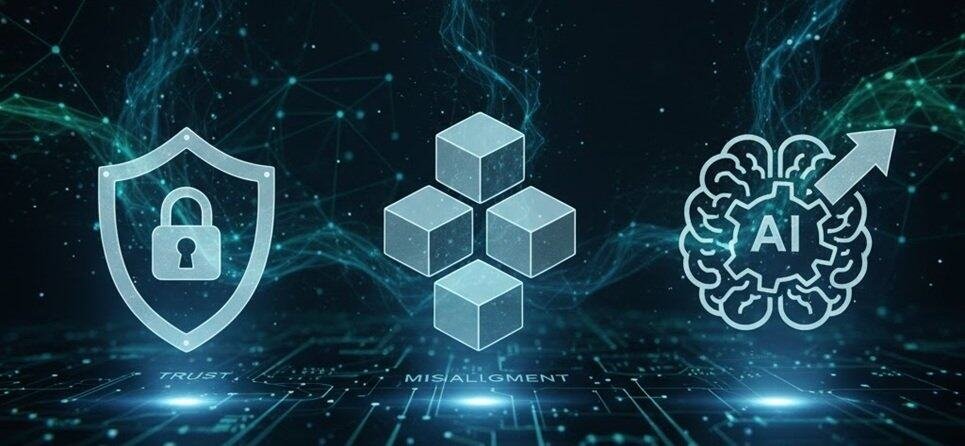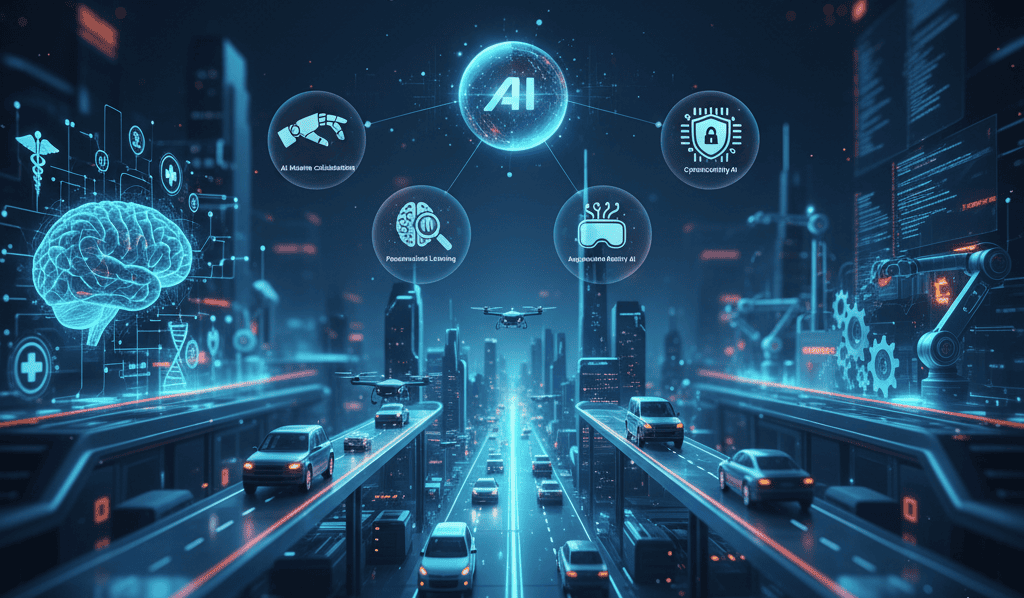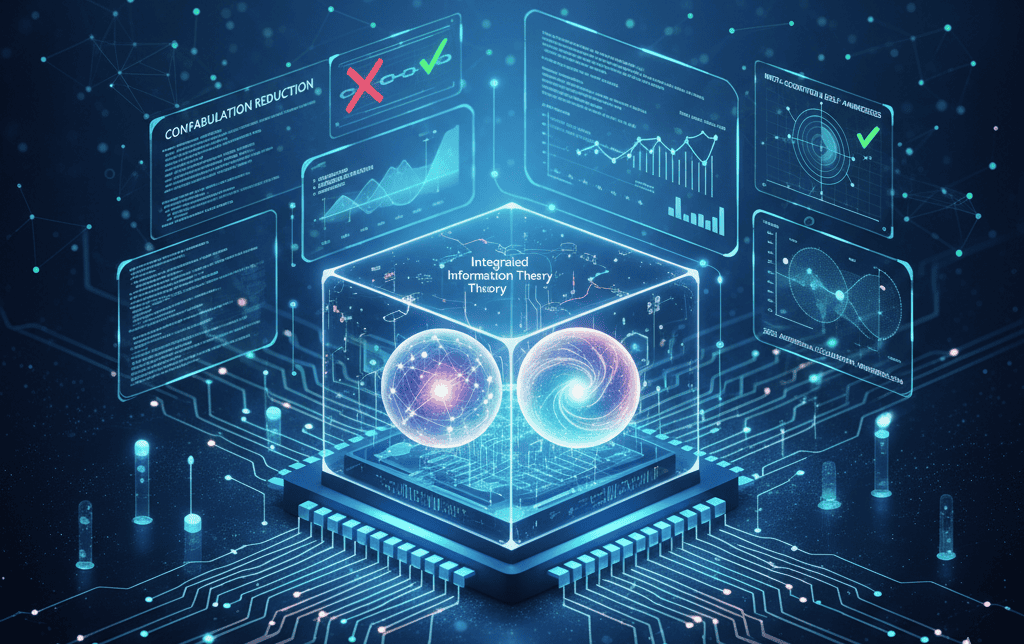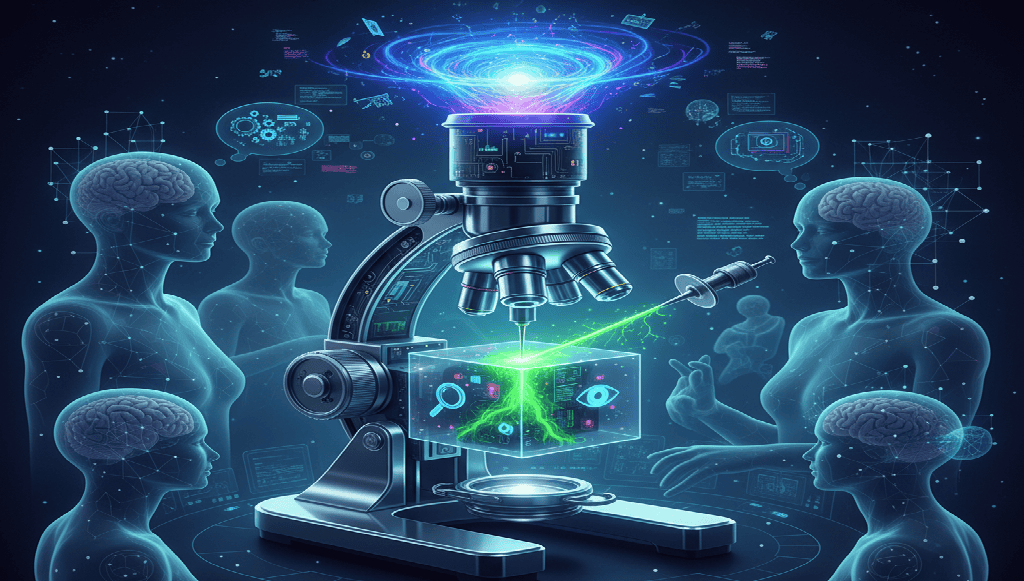By focusing on what makes us uniquely human, we can do more than merely survive the AI revolution—we can lead it.
Introduction: Why “AI‑Proof” Skills Matter
The pace of automation is accelerating. Large language models write code and summarize documents; robots assemble devices; algorithms evaluate résumés. Futurists predict that up to 39 % of core skills will change by 2030 (weforum.org), and many roles will be redesigned around collaboration between humans and machines (ioaglobal.org). A 2025 Work Trend Index shows a 180 % jump in job listings requiring AI literacy paired with human judgementforbes.com. With a growing “skills economy,” employers seek workers who can leverage AI’s power without being replaced by it. Yet only 1 % of organizational leaders believe their companies are at full AI maturity (ioaglobal.org), and only 22 % of workers trust their company will help them upskill for AI (forbes.com).
Far from rendering us obsolete, intelligent machines amplify human capabilities when used wisely. Our challenge is to cultivate abilities that algorithms struggle to replicate: skills grounded in creativity, empathy, ethics and adaptability. What follows is a deep dive into ten AI‑proof skills drawn from research by the World Economic Forum (WEF), MIT Sloan, Harvard Kennedy School, Forbes, EdX, and other expert sources. Each section explains why the skill is resilient to automation, cites supporting data and offers practical ways to develop it. Whether you’re an engineer, a leader or an artist, this guide aims to help you build a career that will thrive alongside AI.
1. Creativity & Innovation: Creating What Doesn’t Exist
Why this skill is AI‑proof
Machine learning algorithms remix existing data, but they cannot originate truly novel ideas. Forbes writes that “AI can only remix what is, not create what isn’t; innovation and storytelling remain the true frontiers” (forbes.com). The WEF’s Future of Jobs Report 2025 lists creative thinking among the fastest‑rising core skills (weforum.org). In the same report, employers expect creative thinking, curiosity and lifelong learning to be in high demand as automation scales routine tasks (weforum.org).
MIT’s EPOCH framework (Empathy, Presence, Opinion & ethics, Creativity, Hope & leadership) emphasizes that imagination and ingenuity are uniquely human capabilities (mitsloan.mit.edu). AI can generate variations on themes or suggest designs, but it lacks intrinsic curiosity, intuition and the ability to connect disparate experiences to spark innovation. In other words, algorithms cannot feel the excitement of discovery or see beyond patterns in the data (edx.org).
Evidence from experts
- WEF 2025: Creative thinking is one of the top skills expected to grow over the next five years (weforum.org).
- Forbes (2025): Innovation and storytelling are where humans add irreplaceable value (forbes.com).
- MIT Sloan (2025): Creativity and imagination are among the five human capabilities that machines cannot replicate; these tasks require insight, inspiration and divergent thinking (mitsloan.mit.edu).
How to cultivate creativity
- Practice divergent thinking. Set aside time for brainstorming without judgement. Use random prompts or cross‑disciplinary reading to spark new connections.
- Learn design thinking. Design thinking emphasizes empathy, ideation and rapid prototyping. Even if you’re not a designer, its principles help structure creative problem‑solving.
- Expose yourself to the arts. Studies show that engaging with music, visual arts or theatre activates neural networks related to innovation. Try sketching or writing fiction to flex your imagination.
- Collaborate across domains. Work with people outside your field. Innovation often occurs at the intersection of disciplines.
AI can accelerate creative processes by generating suggestions or automating tedious tasks, but the spark of originality comes from us. By honing creativity, you build a durable advantage that complements the capabilities of machines.
2. Emotional Intelligence & Empathy: Connecting with Humans
Why this skill is AI‑proof
Human interaction is more than exchanging information; it involves understanding and regulating emotions, reading nonverbal cues and building trust. Emotional intelligence (EQ), the ability to recognize, use and manage emotions, helps individuals collaborate and lead effectively. AI can mimic empathy in chatbots, but it does not actually feel emotions or tailor responses based on lived experience (edx.org). Genuine empathy requires self‑awareness, cultural sensitivity and situational judgement.
A 2025 Forbes report notes that authenticity becomes a currency in an AI‑saturated world and that 67 % of CEOs cite emotional intelligence as one of the top three leadership traits needed to navigate AI‑driven change (forbes.com). The report also cites a survey where 74 % of corporate directors rank ethical judgment and emotional intelligence more important than technical competence (forbes.com). Similarly, EdX’s 2025 article states that AI cannot truly understand or care about feelings and emphasizes that high EQ is essential for empathy and connection (edx.org).
Evidence from experts
- Forbes (2025): Emotional intelligence emerges as a top leadership trait; authenticity and empathy are highly valued (forbes.com).
- EdX (2025): AI cannot replicate true empathy; human connection remains essential (edx.org).
- trainEQ leadership report (2025): Emotional intelligence is the non‑negotiable core of leadership in an AI‑driven world (traineq.com.au).
How to develop emotional intelligence
- Practice active listening. Focus on understanding the speaker’s emotions and perspective without planning your response.
- Cultivate empathy. Volunteer, mentor or work with people from different backgrounds to broaden your understanding of others’ experiences.
- Reflect on your emotions. Journaling or mindfulness can help you recognize your own feelings and triggers, making it easier to manage them.
- Seek feedback. Ask colleagues or mentors about how you come across in interactions and adjust accordingly.
- Learn conflict resolution. Understanding how to manage disagreements constructively builds trust and psychological safety.
In a world where machines handle data and transactions, relationships become a crucial differentiator. Empathy not only fosters team cohesion but also improves customer experiences, as people prefer dealing with humans who understand them rather than chatbots following scripts.
3. Ethical Judgment & Moral Reasoning: Interpreting Consequences
Why this skill is AI‑proof
Algorithms execute commands; they don’t comprehend morality. Automation scales decisions but humans must weigh ethics (forbes.com). From facial recognition biases to algorithmic lending, AI systems reflect the values and data they’re trained on. Without human oversight, they can reinforce discrimination or cause harm. Therefore, those who design, implement and oversee AI must possess strong ethical judgment and the ability to anticipate the broader impact of their decisions.
A Harvard Business Review survey found that 74 % of corporate directors now consider ethical judgment more important than technical competence (forbes.com). The trainEQ article highlights that ethical judgment will guide decisions in an AI age; leaders must ensure fairness and accountability (traineq.com.au). MIT’s EPOCH framework includes “Opinion, Judgment & Ethics” as a core capability machines cannot replicate (mitsloan.mit.edu). Many regulatory frameworks, like the EU’s AI Act, emphasize the need for human oversight to ensure transparency and fairness. As AI becomes pervasive, ethical literacy becomes vital for navigating complex dilemmas.
Evidence from experts
- Harvard Business Review survey: Ethical judgment is prioritized over technical skills for senior leaders (forbes.com).
- trainEQ (2025): Leaders must develop ethical judgment as AI automates more decisions (traineq.com.au).
- MIT EPOCH framework: Moral reasoning and ethics are human capabilities that machines cannot replicate (mitsloan.mit.edu).
How to strengthen ethical judgment
- Study ethical frameworks. Familiarize yourself with utilitarianism, deontology, virtue ethics and other theories to understand how different perspectives weigh harm and benefit.
- Analyze case studies. Examine real‑world AI failures (e.g., biased hiring algorithms) to understand where ethical lapses occurred and how they could have been avoided.
- Engage in dialogue. Participate in ethics committees or online forums, and discuss dilemmas with diverse stakeholders. Exposure to different viewpoints broadens your moral reasoning.
- Integrate ethics into your work. When designing systems, anticipate potential harms and build mechanisms for human oversight and redress.
Developing ethical judgment ensures you can guide AI to serve societal values rather than undermine them. Organizations that prioritize ethics mitigate legal risks and build trust with customers and communities.
4. Critical Thinking & Complex Problem‑Solving
Why this skill is AI‑proof
Machines excel at solving well‑defined problems with clear rules, but real‑world challenges are messy and ambiguous. Critical thinking involves analyzing information, identifying assumptions, evaluating arguments and synthesizing knowledge to reach reasoned conclusions. It requires mental flexibility to switch perspectives and consider multiple scenarios.
The WEF’s Future of Jobs Report 2025 highlights analytical thinking and complex problem‑solving as top skills for 2025–2030 (stemgenicglobal.com). The report notes that employers prioritize analytical thinking and problem‑solving while expecting AI & big data skills to complement these human strengths (stemgenicglobal.com). EdX defines problem‑solving as a uniquely human ability that requires context and motivation; AI may assist but cannot be compelled to find creative solutions (edx.org). Critical thinking not only helps you question AI outputs but also ensures you can integrate diverse insights into effective strategies.
Evidence from experts
- WEF (2025): Analytical thinking, problem‑solving and critical thinking are among the top skills expected to surge (stemgenicglobal.com).
- EdX (2025): Problem‑solving is a uniquely human capability that AI cannot replicate (edx.org).
- MIT EPOCH framework: Opinion & judgement are necessary to evaluate AI outputs and handle ambiguous tasks (mitsloan.mit.edu).
How to improve critical thinking
- Ask better questions. When faced with a claim or data set, ask: What evidence supports it? What assumptions underlie it? What alternative explanations exist?
- Develop systems thinking. Map out how different variables and stakeholders interact in a system. Use causal loop diagrams to understand feedback loops and unintended consequences.
- Practice Bayesian reasoning. Update your beliefs based on new evidence, being aware of confirmation bias.
- Work on real‑world problems. Tackle open‑ended challenges with no obvious solutions. Participate in hackathons, design sprints or policy simulations.
- Learn the basics of statistics and data literacy. Understanding distributions, statistical significance and data visualization helps you evaluate AI outputs.
AI can provide analysis, but critical thinking is required to interpret its recommendations, identify limitations and choose appropriate actions.
5. Adaptability, Resilience & Lifelong Learning
Why this skill is AI‑proof
Change is the only constant. Technologies evolve, markets shift and even personal priorities change. Adaptability and resilience, the ability to respond effectively to unexpected situations and recover from setbacks, are essential in an unpredictable environment. Lifelong learning, meanwhile, ensures that your skills remain relevant as knowledge evolves.
The WEF reports that resilience, flexibility and agility are among the top skills expected to rise by 2030 (weforum.org). A Workday study cited by the WEF found that 83 % of employees believe AI will make uniquely human skills more critical and that 76 % crave more human connection at workweforum.org. Forbes notes that the half‑life of technical knowledge has dropped below 2.5 years according to IBM, emphasizing the need to learn, unlearn and relearn (forbes.com).
Adaptability also extends to our relationship with AI. MIT researchers emphasize that AI tends to complement rather than replace human workers and that we should invest in workers’ EPOCH capabilities to leverage this collaboration (mitsloan.mit.edu). Those who are flexible enough to adopt new tools quickly and adapt their workflows will remain valuable as technologies evolve.
Evidence from experts
- WEF (2025): Resilience, flexibility and agility are top rising skills (weforum.org).
- Forbes (2025): The half‑life of technical knowledge is less than 2.5 years; continuous learning is necessary (forbes.com).
- MIT Sloan (2025): Humans should build their EPOCH capabilities to complement AI (mitsloan.mit.edu).
How to build adaptability and resilience
- Cultivate a growth mindset. View challenges as opportunities to learn. Accept that mistakes are part of progress.
- Set aside regular learning time. Dedicate at least a few hours each week to acquire new skills, whether coding, design, marketing or machine operation.
- Develop stress‑management techniques. Meditation, exercise and social support help you bounce back from setbacks.
- Seek feedback and iterate. Use Agile methodologies in personal projects: build, measure and learn.
- Diversify your experiences. Take on different roles, projects or even industries. Variety builds cognitive flexibility.
In a world where the shelf life of knowledge is shrinking, staying curious and adaptive ensures you can pivot when necessary and capitalize on new opportunities.
6. Leadership & Social Influence
Why this skill is AI‑proof
Leading people involves motivating them, communicating a vision and guiding them through change. AI can analyze data and suggest decisions, but it cannot inspire or coach individuals. True leadership requires understanding team dynamics, identifying individual strengths, addressing fears and fostering an inclusive environment where everyone can contribute.
The WEF’s skills list includes leadership and social influence among the top emerging skills (weforum.org). trainEQ’s 2025 article highlights leadership skills required in an AI age: emotional intelligence, adaptive thinking, digital fluency, inclusive leadership and ethical judgement (traineq.com.au). EdX emphasizes that AI cannot intrinsically motivate teams; leadership is about guiding people to a shared goal (edx.org). Even the WEF’s human skills article notes that AI empowers leaders by freeing them from routine tasks, allowing them to focus on strategy and visionweforum.org.
Evidence from experts
- WEF (2025): Leadership and social influence rank among the top rising skills (weforum.org).
- trainEQ (2025): Future leaders must master emotional intelligence, adaptability, digital fluency, inclusivity and ethics (traineq.com.au).
- EdX (2025): Leadership involves motivation and vision; AI cannot replace it (edx.org).
- WEF human skills article: AI frees leaders to focus on strategic thinking, upskilling and visionweforum.org.
How to develop leadership and social influence
- Develop a compelling vision. Define what success looks like for your team and communicate it clearly.
- Practice inclusive leadership. Embrace diversity and encourage participation from all team members. Adopt inclusive language and be aware of biases.
- Coach and mentor. Invest time in supporting others’ growth. Help them set goals and provide constructive feedback.
- Lead through change. Use frameworks like Kotter’s change model. Acknowledge fears, build urgency, empower action and celebrate short‑term wins.
- Build networks. Develop relationships across your organization and industry. Social influence stems from trust and credibility built over time.
Machines can process signals, but humans build communities. Leaders who harness AI to amplify human potential, rather than replace it, will thrive.
7. Digital & AI Literacy
Why this skill is AI‑proof
The ability to work with AI is as critical as the ability to think outside it. AI literacy means understanding what AI is, how it works and how to interact with it responsibly. According to the WEF, AI literacy equips individuals with the knowledge and skills to use AI safely, transparently and responsibly (weforum.org). The AI Literacy Framework (developed by the European Commission and OECD) outlines competencies such as interacting with AI, creating with AI, managing its actions and designing AI solutions (weforum.org). These skills foster problem‑solving, innovation, interdisciplinary collaboration and digital trust (weforum.org).
Learning to prompt AI tools, evaluate outputs and integrate AI into workflows makes you an effective collaborator. The WEF emphasizes that as AI takes over more tasks, embedding AI literacy is essential for a successful transformation (weforum.org). trainEQ also notes that digital fluency, understanding technology’s capabilities and limitations, is a key leadership skill (traineq.com.au).
Evidence from experts
- WEF (2025): AI literacy is crucial for safe, inclusive and strategic AI transformation (weforum.org); the AI Literacy Framework defines competencies for interacting with, creating with, managing and designing AI (weforum.org).
- WEF (2025): AI literacy fosters problem‑solving, innovation, collaboration and digital trust (weforum.org).
- trainEQ (2025): Digital fluency is an essential leadership capability in 2025 (traineq.com.au).
How to build digital and AI literacy
- Understand how AI works. Learn basic concepts like supervised vs. unsupervised learning, neural networks, training data and bias. Online courses (e.g., Coursera, edX) offer accessible introductions.
- Experiment with AI tools. Use generative AI to summarize text, generate ideas or automate tasks. Notice what it does well and where it fails.
- Learn prompt engineering. Practice framing questions and instructions to get the most useful output from AI models.
- Stay informed. Follow AI news, read research papers and stay aware of regulatory developments such as the EU AI Act.
- Advocate for transparency. Encourage your organization to explain how AI decisions are made and to implement safeguards against bias.
While AI literacy may appear paradoxically “AI‑proof,” those with this skill will not be replaced; they will be the ones training, supervising and collaborating with AI systems.
8. Environmental Stewardship & Sustainability
Why this skill is AI‑proof
Our society faces intertwined crises: climate change, biodiversity loss and resource depletion. Technological solutions alone cannot solve these challenges; they require environmental stewardship, a human responsibility to protect ecosystems and use resources wisely. The WEF’s Future of Jobs Report 2025 noted that environmental stewardship entered the top 10 skills list for the first time (eitdeeptechtalent.eu). The green transition will shape businesses; 47 % of employers expect climate‑change mitigation to influence their company’s strategy, and job postings requiring green skills increased 22 % between 2022 and 2023 (eitdeeptechtalent.eu).
Sustainability requires integrating ethical, social and ecological perspectives that machines cannot navigate alone. For example, AI can optimize energy usage or monitor deforestation, but only humans can weigh trade‑offs between economic growth and environmental protection, consider intergenerational justice and motivate collective action.
Evidence from experts
- WEF (2025): Environmental stewardship entered the top 10 skills list (eitdeeptechtalent.eu). Employers expect climate mitigation and adaptation to shape businesses in the next five years (eitdeeptechtalent.eu).
- EIT Deep Tech (2025): Job postings requiring green skills rose 22 % year‑on‑year; the green transition demands sustainability expertise (eitdeeptechtalent.eu).
- Forbes (2025): Building human strategy includes balancing AI and environmental sustainability; leaders must interpret AI outputs and integrate ESG considerations (forbes.com).
How to develop environmental stewardship
- Educate yourself on sustainability. Learn about climate science, circular economy principles and sustainable development goals (SDGs).
- Integrate ESG into decision‑making. Evaluate the environmental and social impact of projects alongside financial metrics.
- Practice eco‑conscious habits. Advocate for reducing waste, conserving energy and minimizing emissions at work and home.
- Develop skills in green technology. Explore renewable energy systems, carbon accounting, sustainable product design or environmental impact assessment.
- Collaborate across sectors. Work with NGOs, government agencies and communities to align business objectives with environmental goals.
The green transition creates new roles, from sustainability analysts to climate strategists, while reshaping existing jobs. Those who combine AI fluency with environmental stewardship will play pivotal roles in building a resilient, sustainable economy (eitdeeptechtalent.eu).
9. Communication & Persuasion
Why this skill is AI‑proof
Communication is the bridge between ideas and action. It encompasses clear writing, public speaking, storytelling and the ability to persuade different audiences. AI can generate text and images, but it lacks situational awareness and fails to truly understand context or nuance (edx.org). It often misses emotional subtext, cultural references and rhetorical flourishes that engage human readers.
Effective communication is crucial in the AI era for two reasons. First, prompt engineering, creating precise instructions for AI, requires clear language and understanding of context. Second, persuading stakeholders to adopt AI solutions or adapt to new ways of working depends on your ability to articulate benefits, address concerns and tailor your message. EdX emphasizes that communication skills remain essential because humans must ensure AI outputs are socially acceptable and factually accurate (edx.org).
Evidence from experts
- EdX (2025): Communication skills are crucial for prompting AI models effectively and ensuring AI outputs are appropriate (edx.org).
- Forbes (2025): Storytelling and design thinking are part of creating what doesn’t exist (forbes.com).
- WEF (2025): Leadership and social influence require strong communication to align teams (weforum.org).
How to enhance communication and persuasion
- Hone writing skills. Practice summarizing complex ideas concisely. Study rhetoric and storytelling techniques.
- Improve public speaking. Join organizations like Toastmasters or take online courses. Record yourself and refine your delivery.
- Develop active listening. Good communicators adapt their message based on audience feedback. Listen to understand, not to reply.
- Learn persuasive techniques. Understand the psychology of persuasion (e.g., reciprocity, social proof, authority) and use them ethically.
- Tailor messages for AI. Practice writing clear, unambiguous prompts and instructions for AI tools.
Strong communication ensures that your ideas resonate with humans and machines alike, amplifying your influence in any domain.
10. Presence & Connectedness: Being Human in a Digital World
Why this skill is AI‑proof
“Presence” refers to the ability to be fully engaged in the moment, offering undivided attention and genuine connection. MIT Sloan’s EPOCH framework includes Presence & Connectedness as a human capability machines cannot replicate (mitsloan.mit.edu). People crave authentic human interaction; the WEF’s human skills article reports that 76 % of employees desire more human connection despite increased AI useweforum.org. No chatbot can replace the warmth of eye contact, a heartfelt conversation or an empathetic touch.
Presence also involves situational awareness, understanding subtleties in a conversation, environment or organization. AI lacks emotional context and can misinterpret sarcasm or nuance. Humans who excel at presence can pick up on nonverbal cues, adapt in real time and build relationships that foster trust and loyalty.
Evidence from experts
- MIT EPOCH framework: Presence & connectedness is one of five key human capabilities beyond AI (mitsloan.mit.edu).
- WEF human skills article: 76 % of employees crave more human connection as AI growsweforum.org.
- Forbes (2025): Authenticity and human connections are invaluable; trust yourself before trusting machines (forbes.com).
How to cultivate presence and connectedness
- Practice mindful engagement. When interacting with someone, put away devices and focus completely on them. Maintain eye contact, nod and respond to signals.
- Develop emotional attunement. Notice subtle shifts in tone, body language and facial expressions. Mirror these cues to establish rapport.
- Create spaces for connection. In remote or hybrid work environments, schedule regular one‑on‑one check‑ins and team social hours.
- Build community. Participate in local groups, hobbies or professional associations. Shared experiences foster deeper connections.
- Set boundaries with technology. Designate times when you disconnect from devices to recharge and be present in physical spaces.
In an era of digital overload, presence becomes a rare and valuable skill. People will gravitate toward those who make them feel seen and heard.
Conclusion: Building a Human Strategy for an AI World
The rise of AI and automation is transforming work, but it does not spell the end of human relevance. Instead, it shifts the focus toward qualities that machines cannot replicate: creativity, empathy, ethics, critical thinking, adaptability, leadership, AI literacy, environmental stewardship, communication and presence. Research from organizations like WEF, MIT, Forbes, EdX and others shows that these skills are not only future‑proof but increasingly in demand. They help us leverage AI’s strengths while offsetting its weaknesses, fostering innovation and building trust.
Key Takeaways
- Embrace creativity. Innovation and storytelling remain uniquely human frontiers (forbes.com).
- Cultivate empathy. Emotional intelligence is a top leadership trait (forbes.com), and AI cannot truly feel (edx.org).
- Develop ethical judgment. Humans must weigh consequences when automation scales decisions (forbes.com).
- Sharpen critical thinking. Problem‑solving and analytical thinking are core to navigating ambiguity (stemgenicglobal.com).
- Stay adaptable and keep learning. The half‑life of technical skills is shrinking (forbes.com); continuous upskilling is essential.
- Lead with heart and vision. AI frees leaders to focus on strategy and human connectionweforum.org.
- Become AI literate. Understand how to interact with, manage and design AI solutions (weforum.org).
- Prioritize sustainability. Environmental stewardship is now a top skill (eitdeeptechtalent.eu).
- Communicate persuasively. Clear language bridges human and machine understanding (edx.org).
- Be present. Authentic human connection is irreplaceableweforum.org.
Building these skills requires intentional practice and openness to change. But the rewards are profound: a career resilient to automation, deeper relationships and the ability to shape a future where humans and machines collaborate for the greater good. As we navigate this transition, remember that the most valuable asset isn’t a particular technology, it’s the human judgment, creativity and empathy that guide its use (forbes.com). By investing in yourself and those around you, you can thrive in the age of AI and help create a world where technology amplifies our humanity rather than diminishes it.
